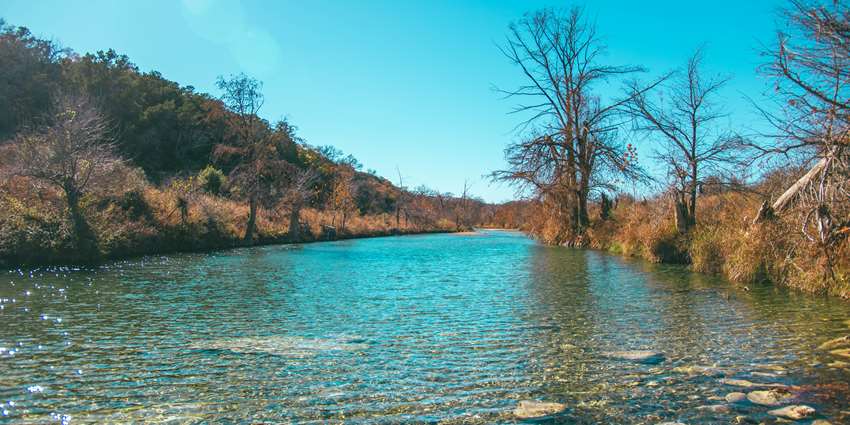Tag(s): BGI, blue-green infrastructure, green stormwater infrastructure, GSI, research roundup, texas water resources institute, twri, Urban Water
The Blanco River, near Wimberley. (By Chantal Cough-Schulze)
Read recent peer-reviewed publications by TWRI scientists:
- Water Management on the U.S.-Mexico Border: Achieving Water Sustainability and Resilience through Cross-Border Cooperation, co-authored by TWRI’s Rosario Sanchez, Ph.D.
- Green stormwater infrastructure: A critical review of the barriers and solutions to widespread implementation, co-authored by TWRI’s Bardia Heidari, Ph.D., and Dean Minchillo.
- The Declining Ogallala Aquifer and the Future Role of Rangeland Science on the North American High Plains, co-authored by TWRI’s Ed Rhodes.
- Not a silver bullet: social perspectives on desalination and water reuse in Texas, co-authored by TWRI’s Wendy Jepson, Ph.D.
Catch up on water-related research from universities around Texas:
- Daylong wastewater samples yield surprises: new research by Rice University scientists compared simple, “snapshot” samples of wastewater to daylong composite samples and found that snapshot samples were more likely to result in bias in testing for the presence of antibiotic-resistant genes.
- Woody thickets preventing water recharge in Carrizo-Wilcox aquifer: Texas A&M AgriLife Research scientists found that the expansion of woody plants across Texas’ Post Oak Savannah is significantly reducing water recharge in the Carrizo-Wilcox aquifer.
- Evaluation of citrus grove floor management strategies for water use efficiency and conservation: Texas A&M University – Kingsville scientists evaluated water savings and tree growth while using four different grove floor management and irrigation strategies.



